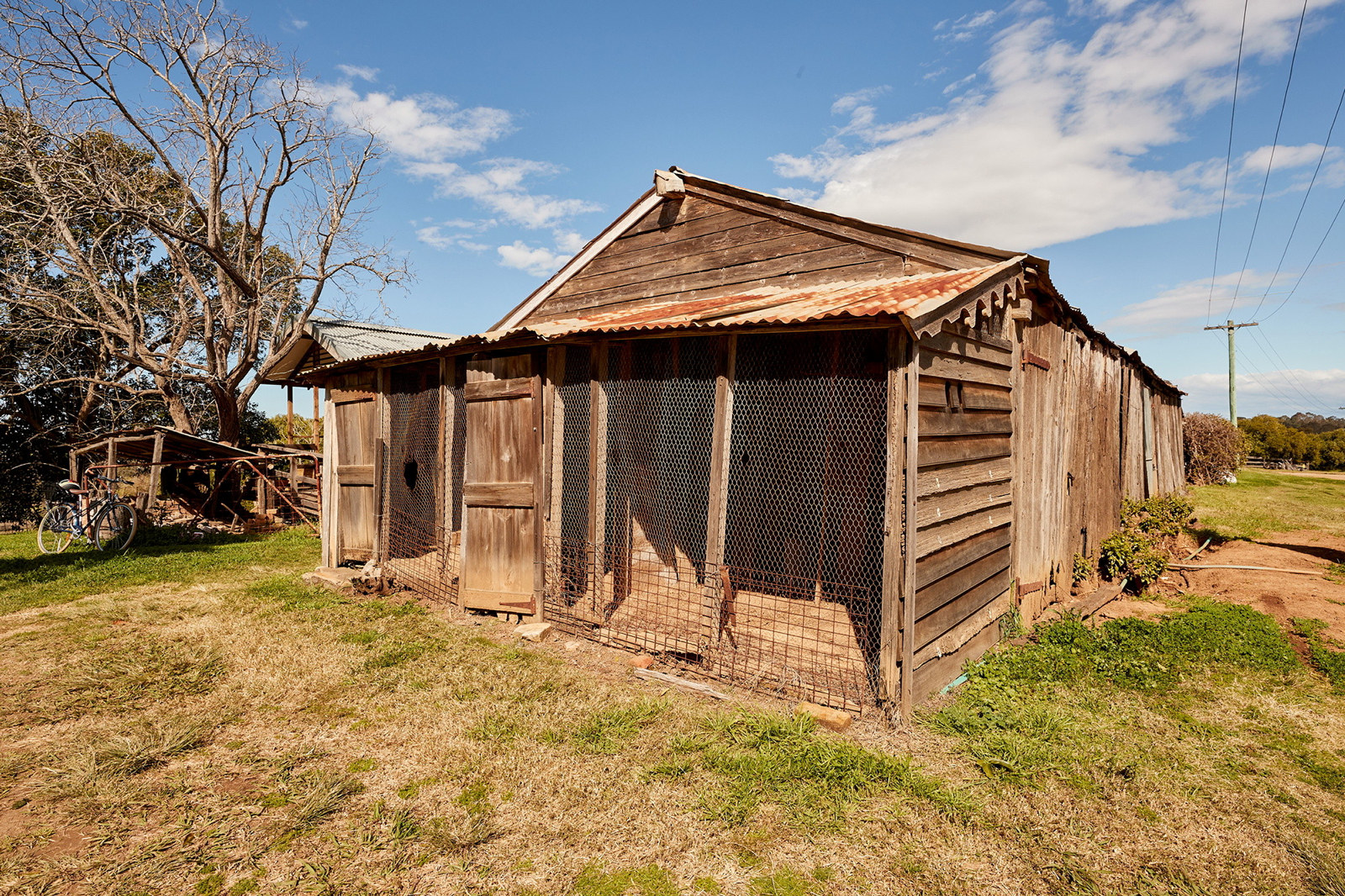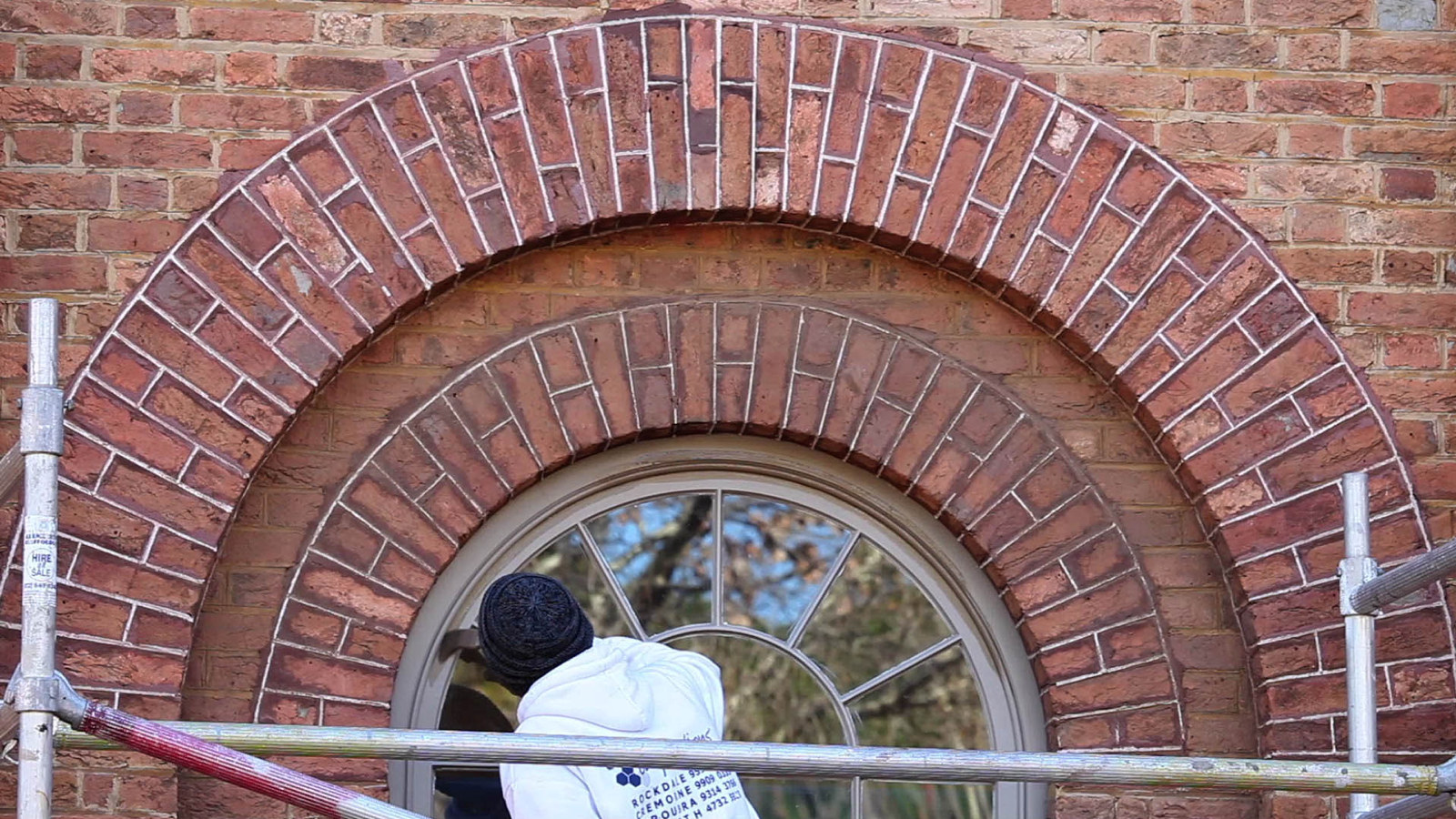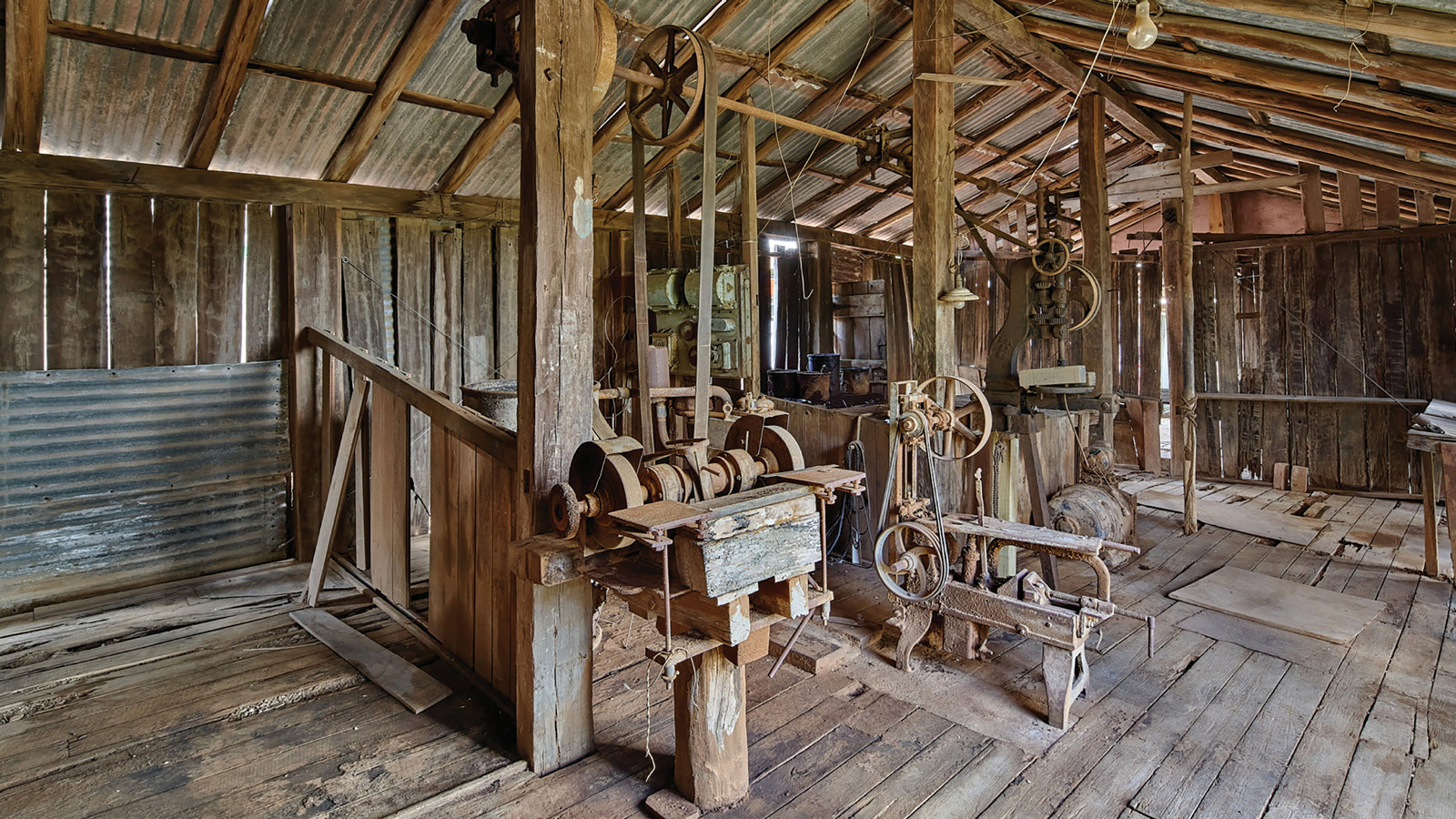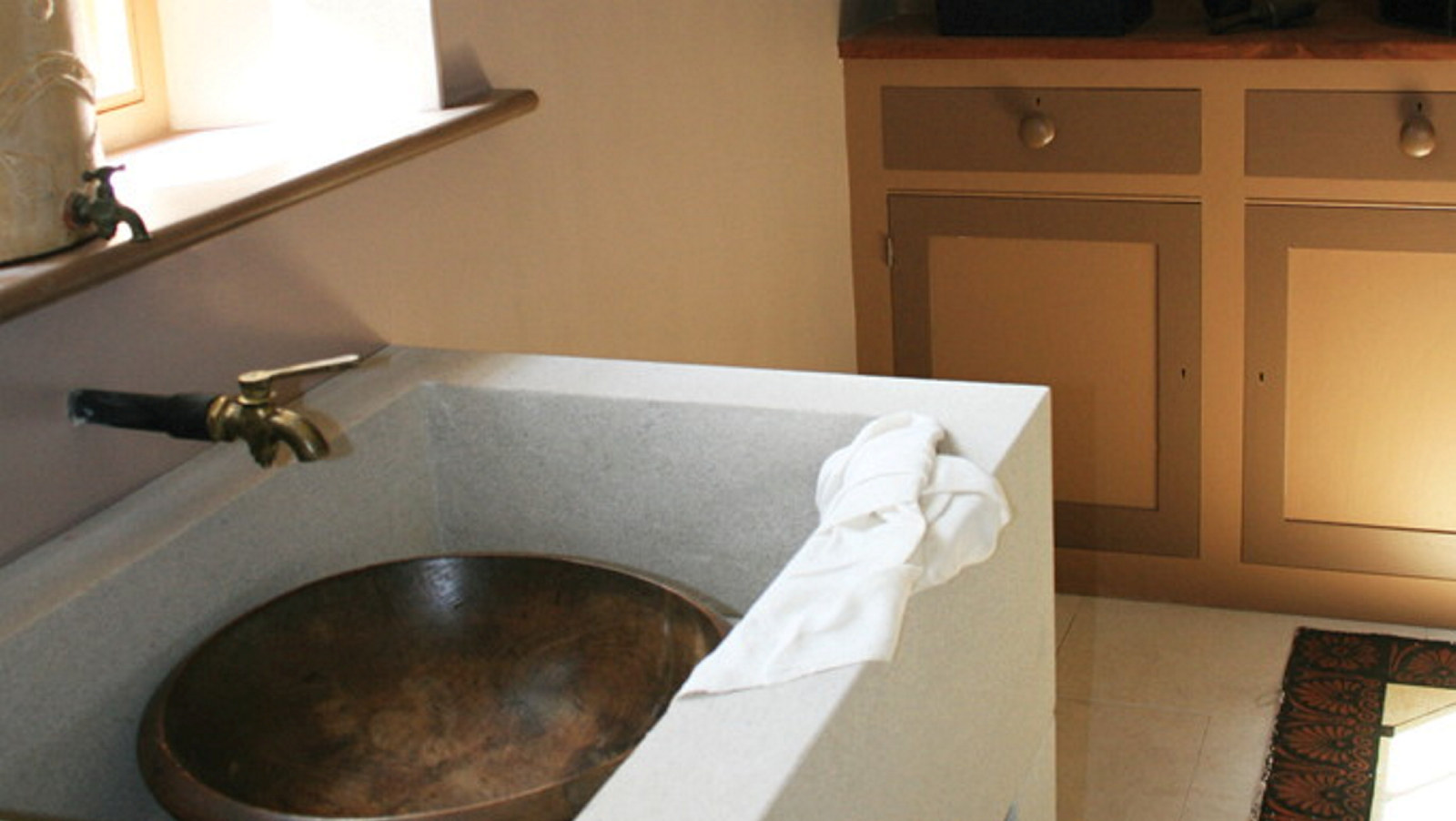Kirnbank ceiling rose
This plaster ceiling rose comes from the ballroom of the now demolished house Kirnbank in the Sydney suburb of Arncliffe.
Kirnbank was built around 1894 as a two storey bachelor house by civil engineering and railway works contractor Justin McSweeney (1852-1920). In 1898 a three storey wing was added, which included a number of reception rooms and the elaborately decorated ballroom from which this ceiling rose originated. The extension was completed in time for McSweeney’s marriage to Emily Ada Dawson, daughter of the proprietor of Dawson’s Hotel in Regent St, Sydney.
The Kirnbank ceiling rose is decorated by scallop shells with Australian Christmas bells, flannel flowers and waratahs set in a bed of native ferns. It illustrates the trend for naturalistic rendering of flora in applied ornament by the 1890s and the growing Australian move to blend classical detailing with local species.
The Kirnbank property was sold in 1955 and the house was used as a factory office until its demolition in the mid-1980s for factory extensions. The ceiling rose was one of a number of items saved prior to demolition.
A section of moulding with almost identical design, from the workshop of architectural plaster modellers T. Grounds and Sons, is held by the Powerhouse Museum, Sydney. The Kirnbank ceiling rose was likely cast from a mould in the Grounds’ range.
Plaster architectural moulding of floral medallion by T Grounds and Sons, Museum of Applied Arts & Sciences, accessed 14 September 2021, https://ma.as/204774
The Kirnbank ceiling rose is decorated by scallop shells with Australian Christmas bells, flannel flowers and waratahs set in a bed of native ferns. It illustrates the trend for naturalistic rendering of flora in applied ornament by the 1890s and the growing Australian move to blend classical detailing with local species.
The Kirnbank property was sold in 1955 and the house was used as a factory office until its demolition in the mid-1980s for factory extensions. The ceiling rose was one of a number of items saved prior to demolition.
Published on
Related

Conservation
A herculean task: clearing the woolshed
The first stage of a major conservation project at Rouse Hill Estate involved removing thousands of objects accumulated over 150 years of the property’s occupation

A lighter shade of drab
In this video, as specialist painter Adam John Christian Seur goes about his work, curator Gary Crockett explains the origin of drab

Conservation
A strong and simple structure: conserving the woolshed
The second phase of a major conservation project on the woolshed at Rouse Hill Estate has seen the rustic 160-year-old structure strengthened and stabilised

Absconding with the silver
Why we recreated the butler's pantry at Vaucluse House along with a fascinating tale of 'light fingered' servants
